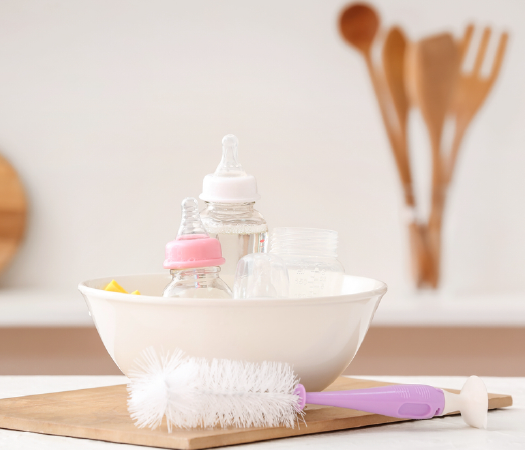
What You Need to Know About Pacifier and Bottle Cleaning for Baby Health
New parents want to do the right thing for their baby's health. It's important to make sure everything that goes into your baby's mouth is clean in order to protect your baby from illness. One of the objects that your baby is in frequent contact with is undoubtedly the bottle and pacifier. Bottle and pacifier cleaning is often a curiosity for new parents. In this article, you can find answers to frequently asked questions about pacifier and bottle cleaning.
How Often Do You Need to Sterilize Bottles and Teats?
Pacifiers and bottles do not need to be sterilized as often as is believed. With the widespread access to safe water resources, there is no need for this process to be carried out frequently. Sterilization can be performed before the first use and perhaps periodically thereafter. However, there is no need for bottle sterilization after each use.
In Which Situations Is It Necessary?
Sterilizing newly purchased bottles and pacifiers makes these items safe for your baby. We have no idea where the objects come into contact with during the production and transportation processes. Therefore, it will be very useful to disinfect the items that will enter your baby's mouth before using them.
What is the Difference Between Washing and Sterilization?
Sterilization is the application of heat to kill germs in bottles. Steam and hot water are the two main methods used for sterilization.
Washing is part of your normal cleaning routine. You wash it in the dishwasher to remove any remaining milk or other stains from the bottle. U Green Clean herbal Teat Bottle Cleaner provides sufficient effect to remove microbes in the bottle. Therefore, there is no need for sterilization. It will be beneficial to wash your bottle with this method after each use to get rid of stains on the bottle and prevent the growth of bacteria.
More Tips for Baby Health and Cleaning
Feeding safety starts with bottle cleaning. But there are other things, ways to reduce the chance of germs getting into your baby's food.
- Wash your hands before using bottles, pacifiers and formula.
- Wash the food storage container before first use.
- Mix baby food with a safe source of water.
- Store nutrients in a closed cabinet in a sheltered area.
- Allow the laundry to dry completely to minimize the growth of germs and mold.

